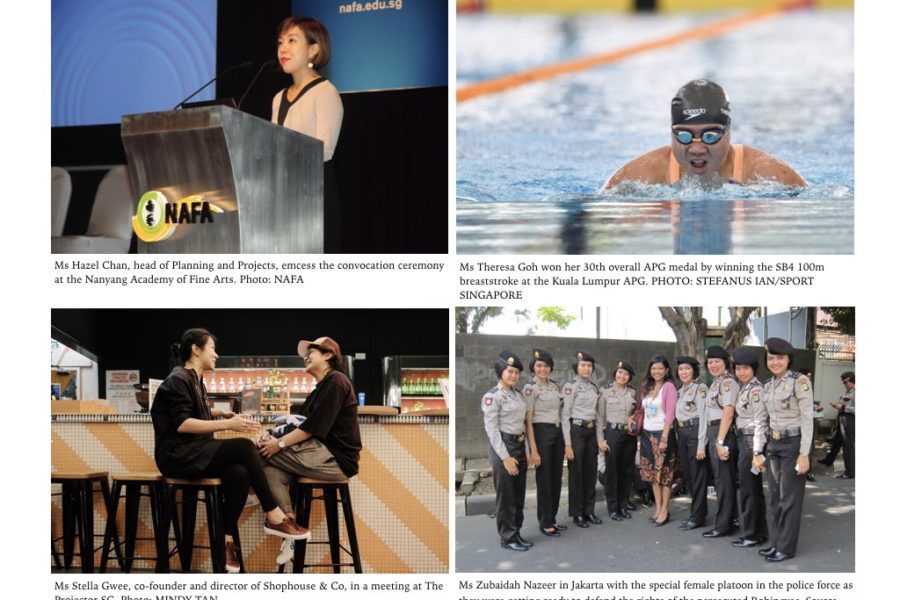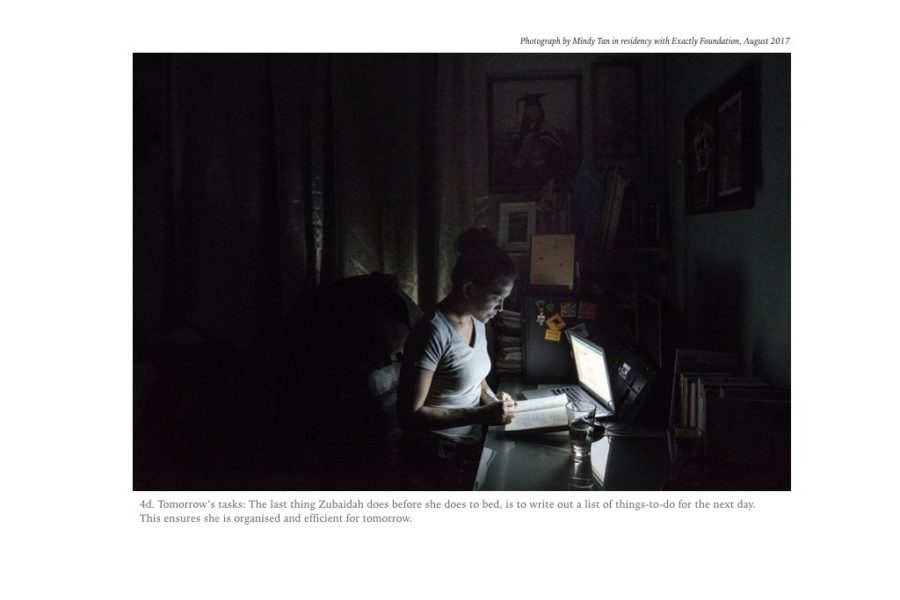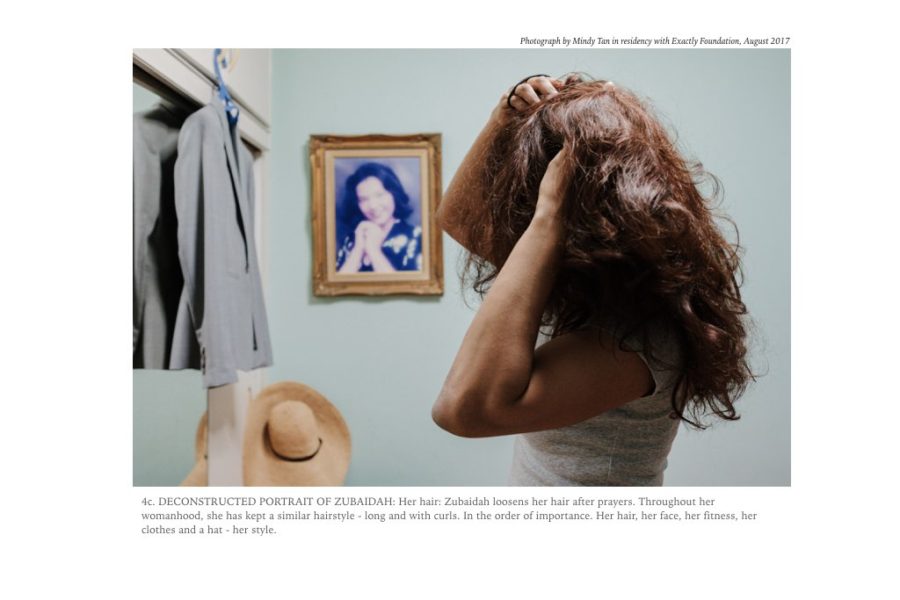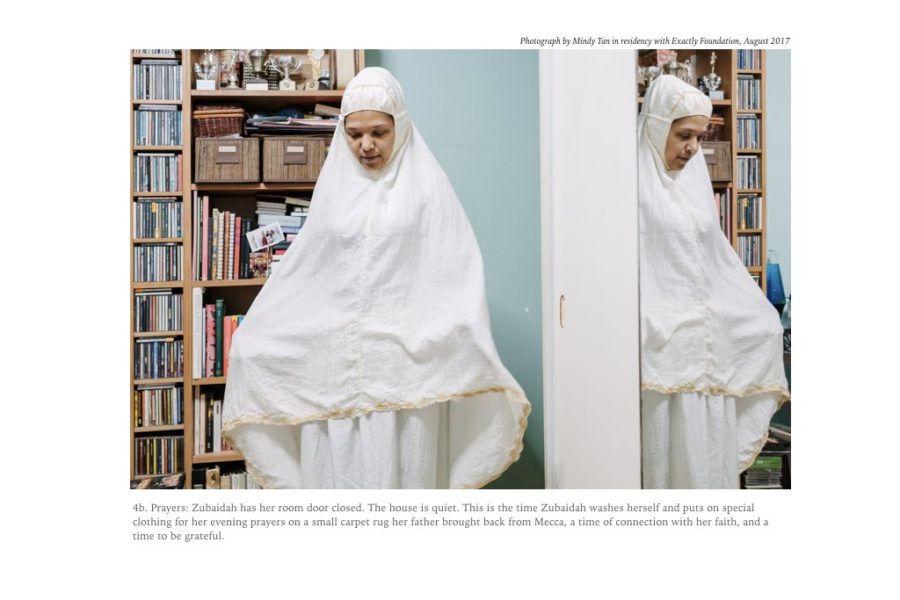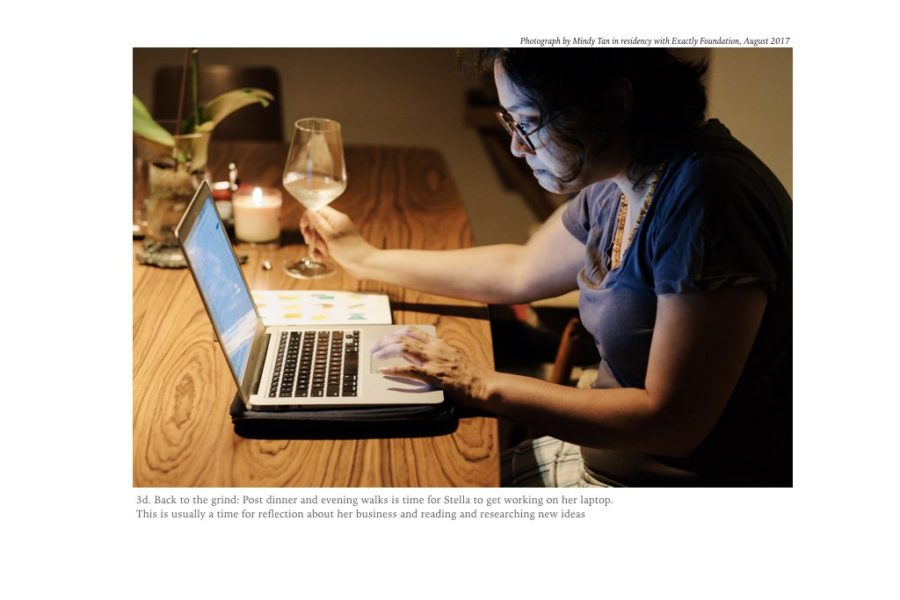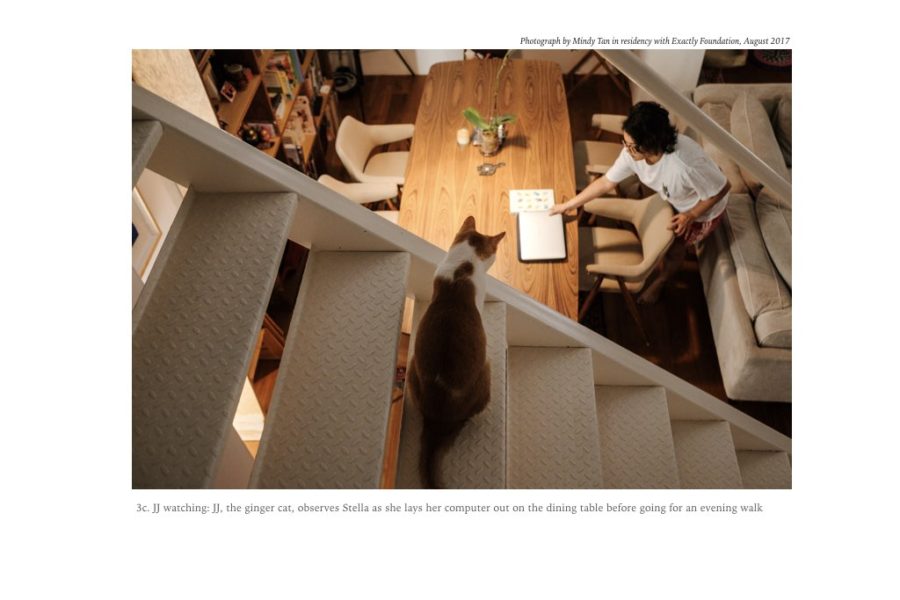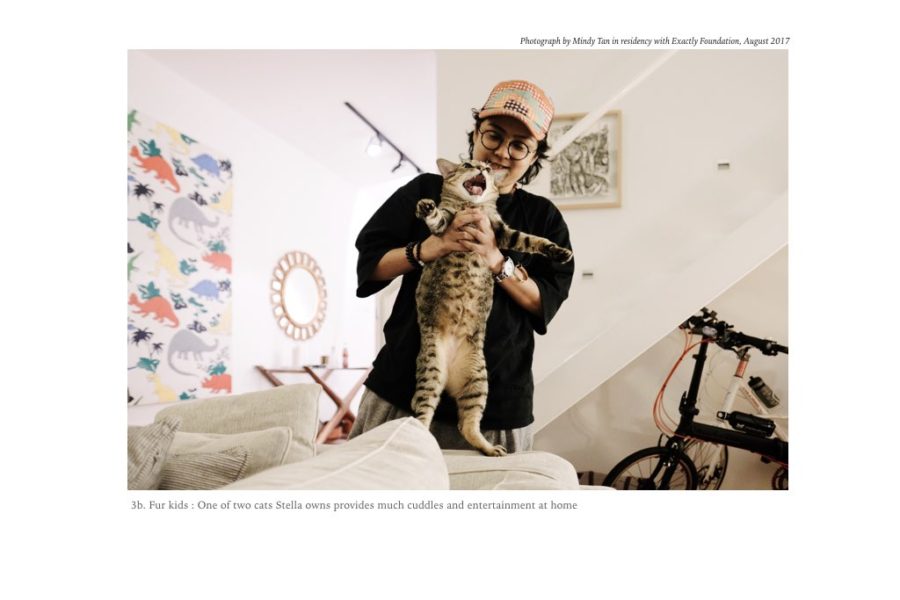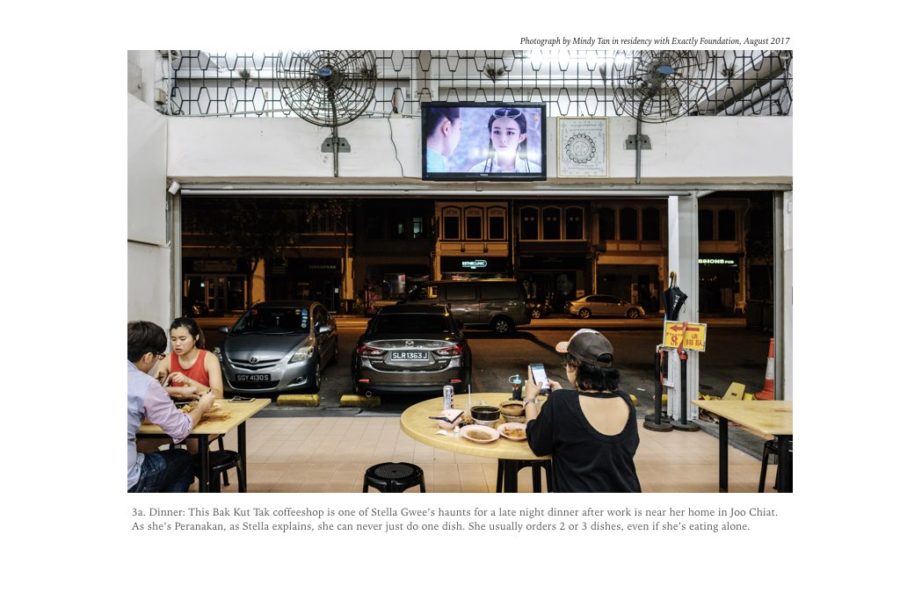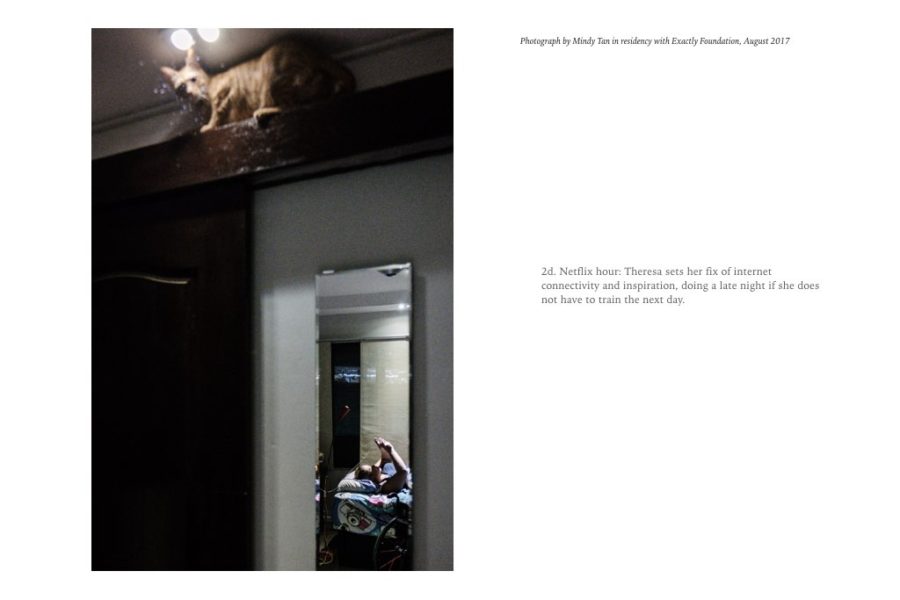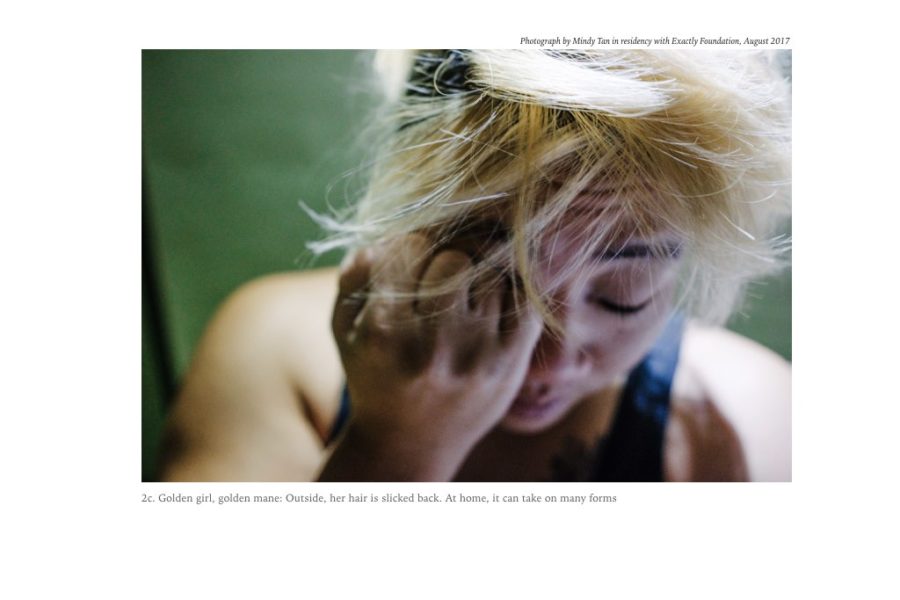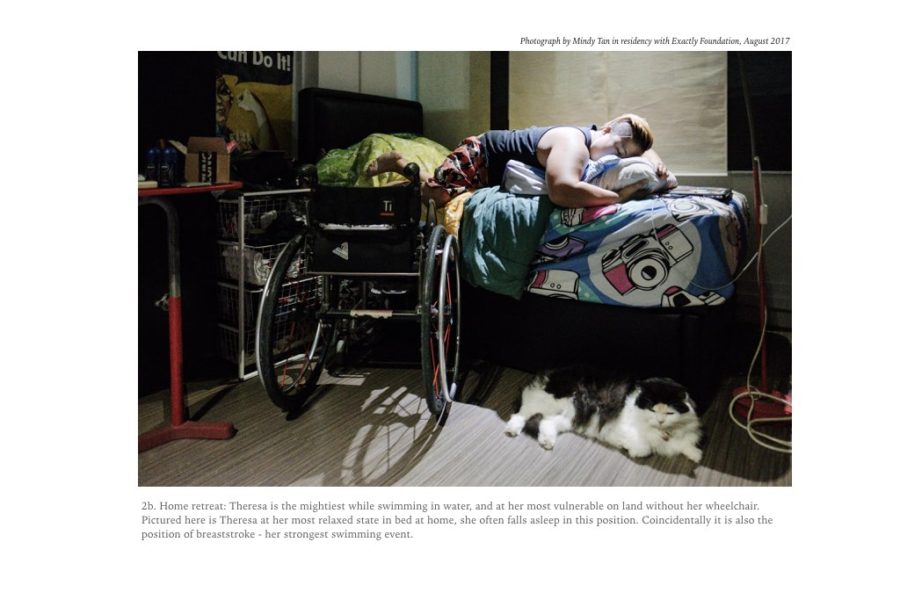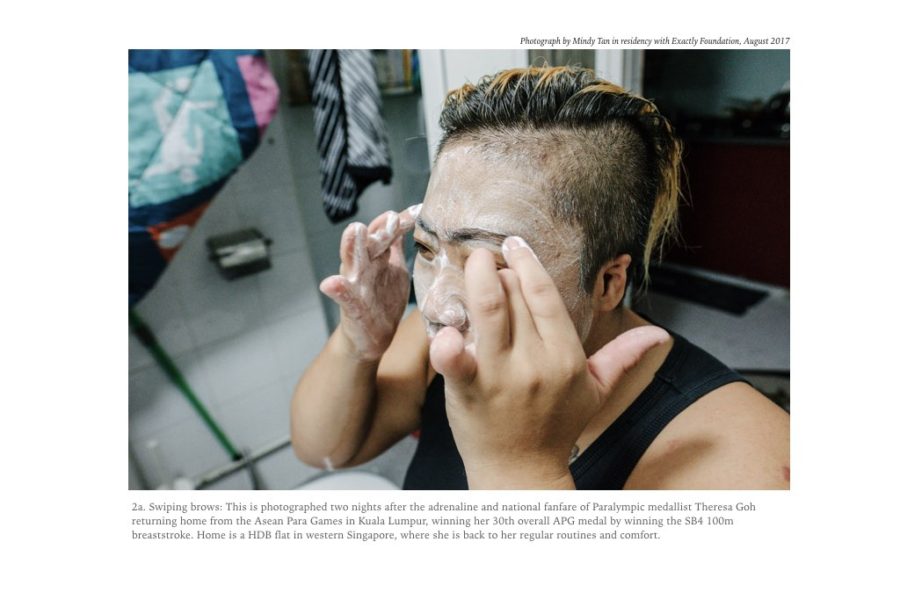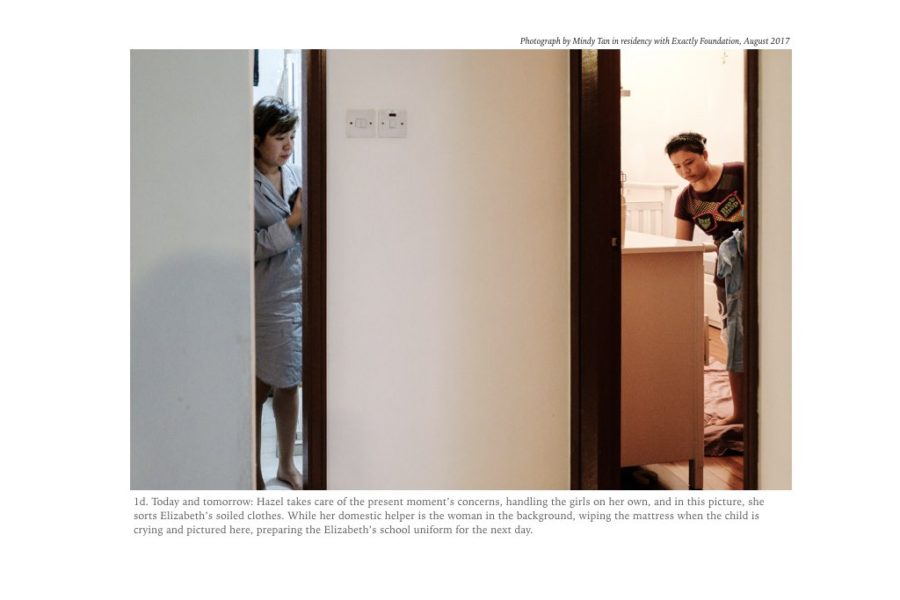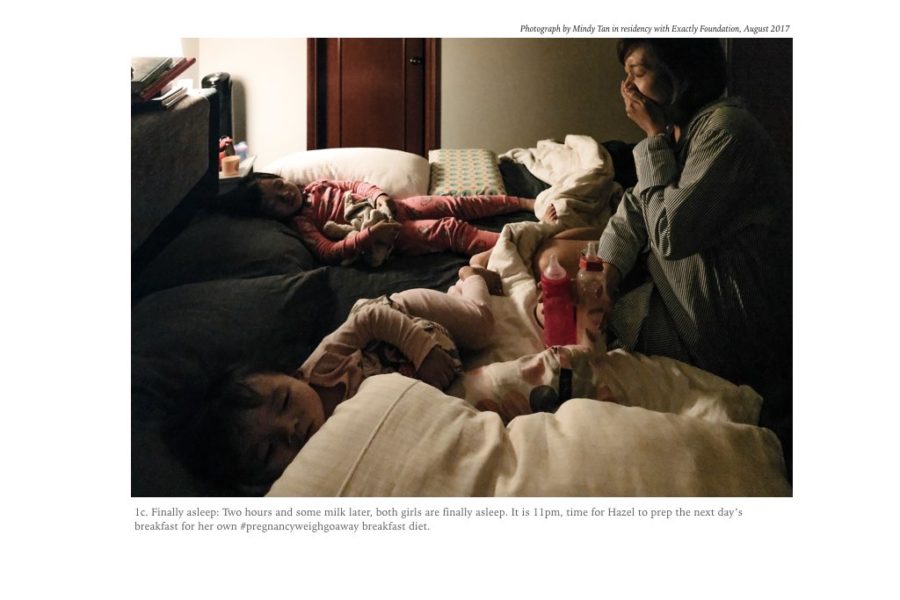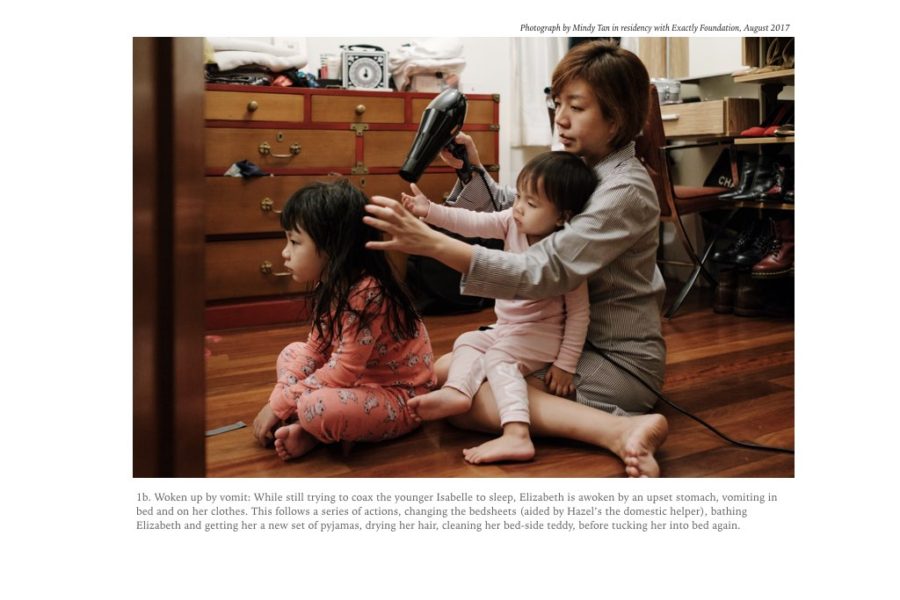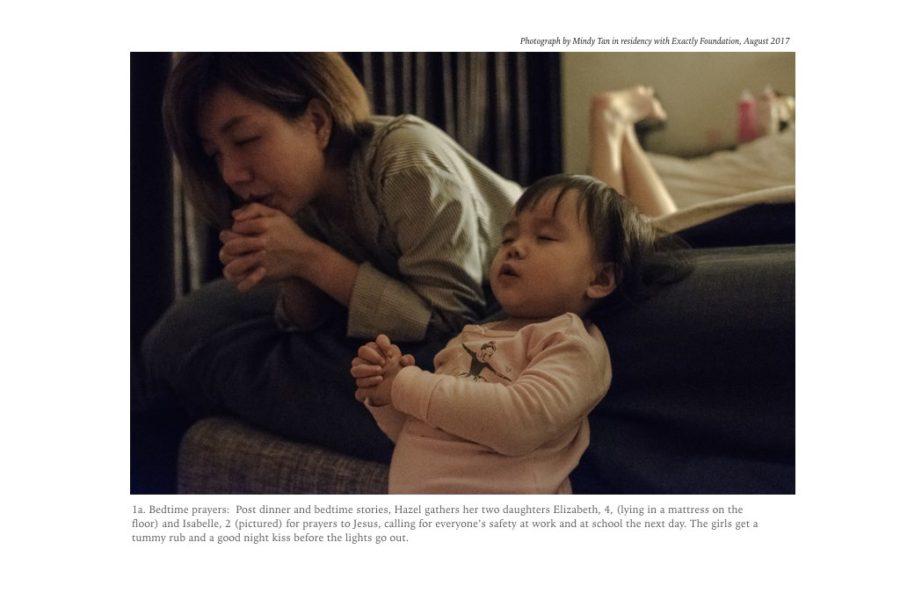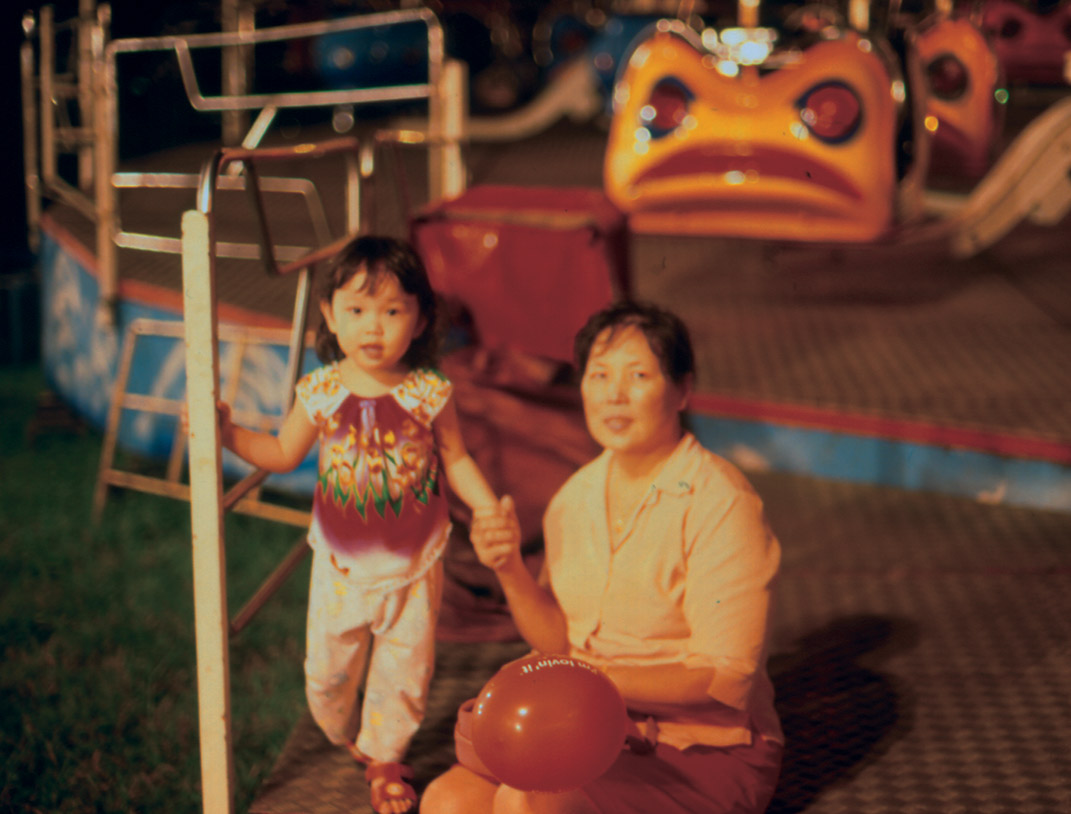
Photo by Mindy Tan (2004): Mother and daughter at Jurong East Central Fun-Fair
Artist Statement – Mindy Tan. the hour before she sleeps
As the day unwinds and as the make-up comes off, is she superwoman at that point?
Who is the Singapore woman in the third wave?
Drawing from the intimacy of the last hours of the day as a metaphor, I look at Singaporean women in their private lives and thoughts.
August 2017
Artist’s Statement – Mindy Tan
the hour before she sleeps
7th October 2017
NOTE: No part of ANY text and material related to the hour before she sleeps can be used, copied, published or quoted without written permission from the author(s).
PHOTOGRAPHING THE THIRD WAVE OF SINGAPORE WOMEN BEFORE SHE SLEEPS
As the day unwinds and her make-up is removed, she is not superwoman at this point. I record four women of Singapore’s third wave in their private lives, drawing from the intimacy of the last hours of the day.
Entering this space is a search for the visual identity of a Singapore woman, a space that digs beneath the Singaporean methodology of surveys, statistics and charts, to access behind the door, the real and the ordinary, for an alternative understanding.
However to seek a deeper understanding, I also dug out the charts to trace the history of her growing up:
THE SETTING:
1. DEFINING SINGAPORE’S THIRD WAVE:
Enter the third wave of Singapore – adults born in the 1970s and 1980s who are in their 40s and 30s today.
This is the segment of the population who form a significant percentage of the workforce and have gained enough experience to hold key positions as leaders, entrepreneurs and decision-makers. Essentially, they are the movers and shakers of Singapore today.
As Singapore goes beyond 50 years of nationhood, the median age of the resident population in 2017 is 40.5 years, with more women than men, 60.4% of whom are in the workforce, the Singapore Statistic department reports.
This group is most likely to have a migrant grandmother, a Singapore-born mother, and she herself born Singaporean.
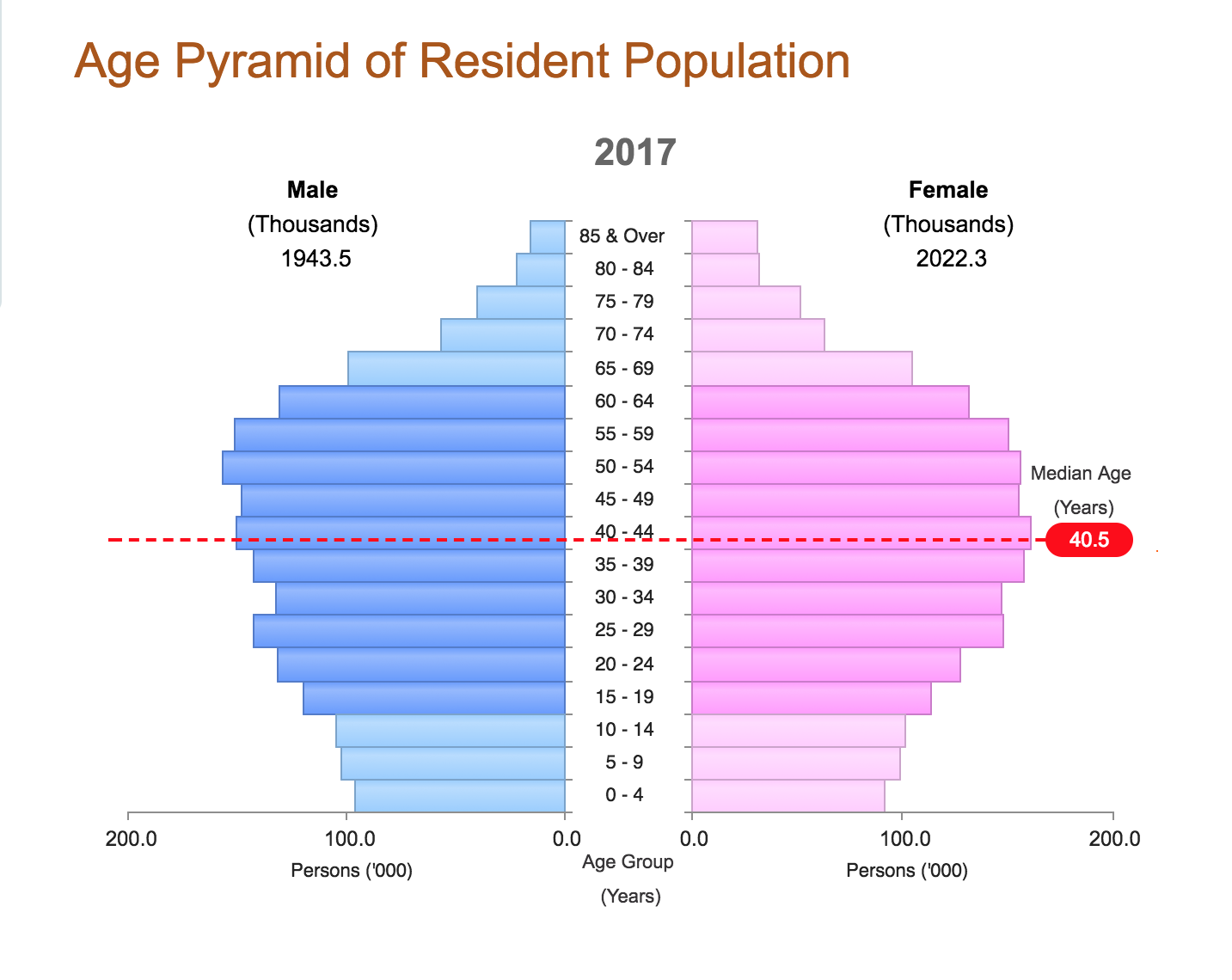
(For clarity, the third wave of Singapore residents consists mainly of third-generation Singaporeans but there are exceptions such as those with a Peranakan lineage who may be today 9th or 10th generations, or those such as Malaysians and Permanent Residents who grew up and schooled in Singapore, claiming it as home.)
- THE MISC-EN-SCENE OF THE LAST HOURS OF THE DAY
My photography has always been about ordinary people and ordinary lives. Little controversy exists on the surface if you simply think about the scenes that could be photographed. It is like digging under the soil for the finest roots of the plant – the roots which run the deepest, absorb the most nutrients, and give strength to the plant that emerges on the surface.
The photoshoots typically begin from the subject’s departure from her workplace, building up over several hours in the evening until she goes to bed. All the photos are executed using a documentary style of photography.
- THE CANDIDATES:Specifically chosen are 4 candidates to mirror the latest 2016 resident population ethnic composition index (CMIO: 74.3% Chinese, 13.4% Malay, 9.1% Indian, 3.2% Others).
1. Ms Hazel Chan, b. 1981, Chinese
2. Ms Theresa Goh, b. 1987, Chinese
3. Ms Stella Gwee, b. 1976, Chinese-Peranakan with a mix of Thai descent.
4. Ms Zubaidah Nazeer, b. 1976, Indian-Muslim
The candidates hold key leadership positions in their workplaces and are selected for their achievements in their careers, to understand how women have been empowered in this strongest wave.
Ms Hazel Chan heads the Planning and Projects office at the Nanyang Academy of Fine Arts. She works full-time and is a mother of two daughters aged 4 and 2. Her domestic helper and mother-in-law are at home with her daughters when she is at work.
Ms Theresa Goh, born with spina bifida, is a prolific Paralympic swimming medalist with 30 ASEAN Paralympic Gold medals under her belt. Among her many awards, she has been named Sportswoman of the year, The Straits Times Singaporean of the Year 2016, Her World Woman of the Year 2015, and is on the Singapore Council of Women’s Organisations’ Hall of Fame. Ms Goh went public about her 2017 her gay sexuality and advocates for the LGBT community.
Ms Stella Gwee is the co-founder and director of Shophouse & Co, is a creative placemaking studio that helps city agencies, companies and communities, turn urban spaces into vibrant places for live, work, and play. A typical evening sees her working late in her office before returning home to her two cats
Ms Zubaidah Nazeer is a communications consultant. She was previously The Straits Time’s Indonesian Bureau Chief and a journalist for 15 years and lived in Jakarta and Hong Kong before resettling in Singapore.
Before the photoshoot, which was conducted as close as possible in a documentary style, all candidates have had an understanding of the purpose of the photographs, that they would be highlighted in discussions and published.
The candidates were assured that they would be able to vet and approve the photographs that will be shown, to their personal comfort levels.

WHY THE THIRD WAVE?
It is a supposed fact in behavioural science that the third in a series of waves is the strongest.
There have been many ideas based on this such as Third Wave feminism, Third wave democracy, and the Third wave social experiment. One widely used and proven wave pattern is the Elliot Wave theory which was developed into 1920s and became popular much later, used to predict the bulls and bears of the forex market.
Looking at the Elliot wave, we can easily observe how the wave peaks in the third cycle.
That is where we are now – the third wave or presumable third generation of Singaporeans, leading the country into the future.
If we assume this wave pattern is a guide for the maturity of Singapore identity, has Singapore’s identity reached its peak in this third wave of Singapore residents?
 PREDICTING THE FUTURE
PREDICTING THE FUTURE
What now can be observed is the continuum of Elliot’s wave after it peaks on the third cycle (5) – the next wave (B) will be weaker and will go down for two cycles, before it goes up again.
THE UNIQUE CIRCUMSTANCES OF THIRD WAVE SINGAPOREANS
Coincidentally, Singapore residents born in the third wave experienced a surge in the country’s wealth while during their formative teenage years. They also experienced a global boom thanks to the emergence of the internet.
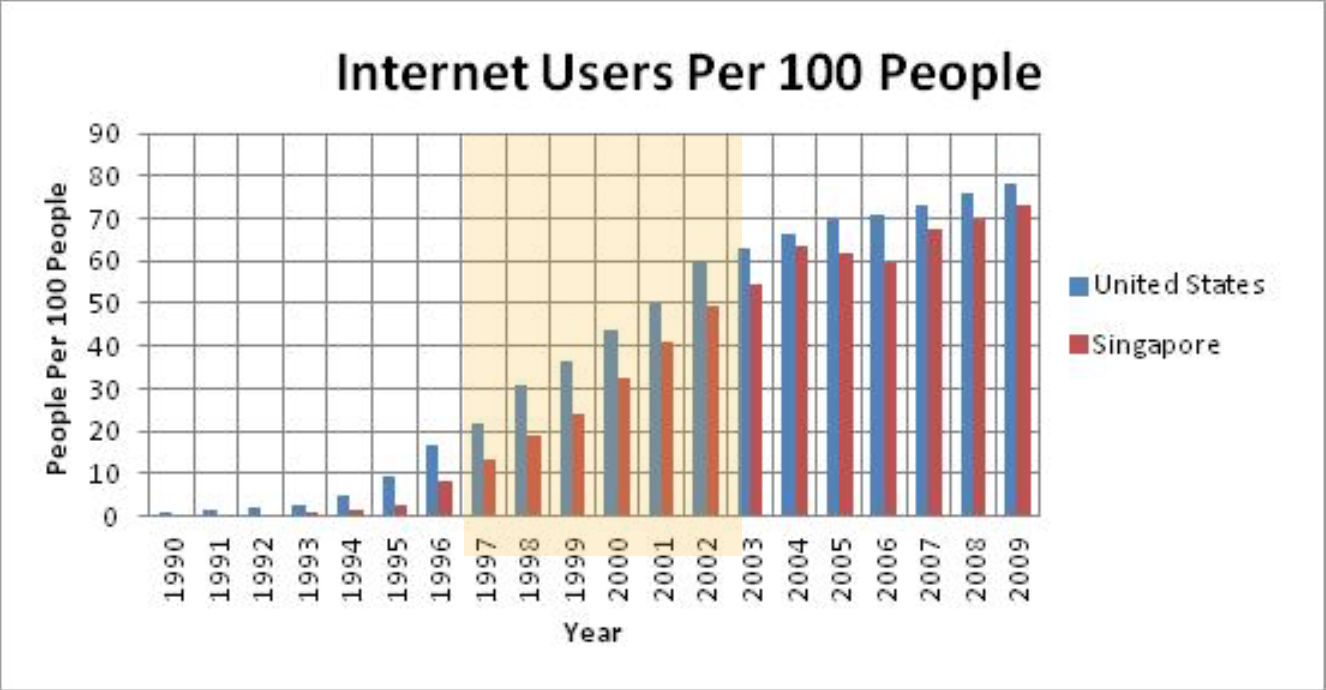
In their teens, averaging 16 years old when they received secondary and college education between 1986 to 1996, they witnessed transformative cityscape changes. The Mass Rapid Transit (MRT) system, planned in 1960s, began its operations in 1987. The first luxury megamalls were built along Orchard Road. Takashimaya was built in 1993.
For the third wave Singapore woman, she has gone from taking the bus as a child to riding the MRT as a teenager. She went from shopping at the local market to hanging out in Orchard Road, all in good timing.
Singapore was undergoing great development, with a 2.6-fold per capita GDP increment from $15,000 to almost $40,000. This means her parents had more money to spend on her as technology advanced.
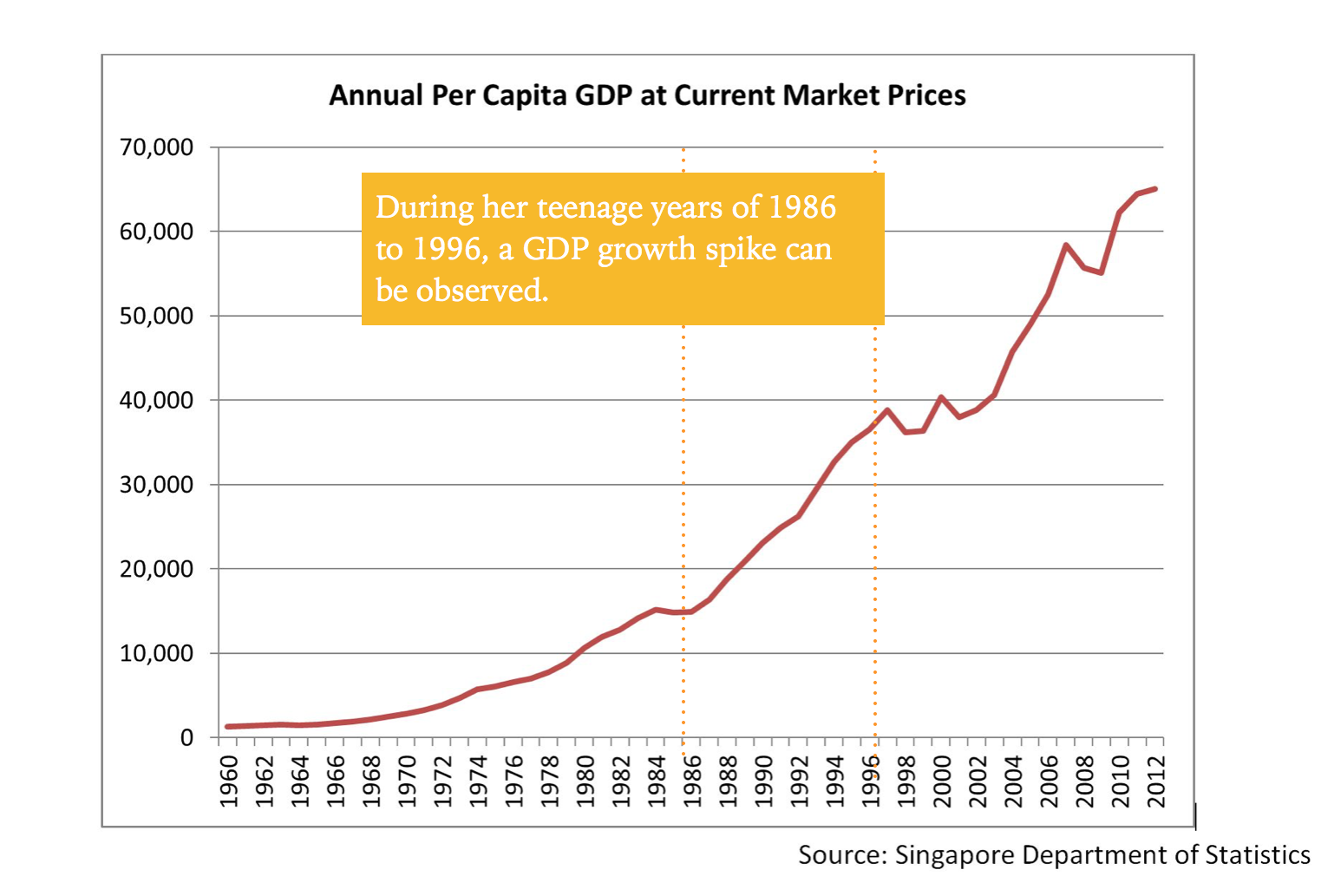
Politically, these were also Lee Kuan Yew’s final years as Prime Minister succeeded by Goh Chok Tong in 1990. Lee then became Senior Minister.
As she went to college and university between the age of 17-23, which occured during the years 1997 to 2003, the global internet boom reached its peak during this short period. Within a few years, her communication channels changed drastically from picking up the home phone to call her best friend’s home in primary school, to using pagers and handphones in college, then later on logging onto the computer for MSN chat in university.
Born in the 70s and 80s, reaching her teens in the 90s and early 2000s, the third wave of Singaporean has gone a childhood devoid of the internet, to experiencing technological peaks and becoming heavily reliant on it.
Throughout for formative years, her environment was build around a positive climate of a burgeoning economy locally and globally, pointing to hope, freedom, empowerment and opportunities. Singapore’s education system based on meritocracy further reinforced the idea that hard work will get you anywhere. She is widely travelled,
But the graphs for the development of womanhood and what a woman should be may not be on the same trajectory. The demands of being women – caretaker, child-bearing stay-at-home mother, has kept constant over generations.
Armed with full educational qualifications, freedom to travel the world, and having witnessed how Singapore awakened during her teens, how can she grapple with traditional demands and constrains womanhood that has been passed down from generation to generation?
Will she be the woman her mother was or grandmother was?
THE WOMAN MY MOTHER WAS
Each successive generation of Singapore woman have grown up as daughters to a different type of mothers.
1st GENERATION / WOMEN OF THE 1st WAVE: The first generation of Singapore women was brought up by her mother in her hometown in China, India, Indonesia, Malaysia or other countries. A number of these women may also have been fostered or adopted as it was a common practice back then.
She can be generalised as being an immigrant who braved the odds sailing from China to Singapore fighting for survival, health and a basic roof over her children’s head, many of whom lived through the war and Japanese invasion. She brought her hometown’s dialect, culture, traditions. Perhaps she also lived with thoughts of returning to her motherland when the money was made.
Her decisions were led by the need to escape the physical hardship in post-war, pre-Independent Singapore and the struggle to bring up a large family. Singapore’s first chief minister, David Marshall’s 1955 Citizenship Bill to naturalise long-time residents for coolies and samsui women, was targeted at her- where she would become the first citizens of Singapore, and pledge loyalty to Singapore.
2nd GENERATION / WOMEN OF THE 2nd WAVE: The second generation of Singapore women are brought up by immigrant mothers. They are born in Singapore, into a multi-racial society but have parents who come from different lands. Caught between an industrialised country and her own migrant mother’s traditional beliefs, she finds a way of reconciling the effect of her ancestry vs new government policies, more jobs opportunities for women and new affluence in a multi-cultural city. She has to make never-before decisions on how she should bring her children up. What values should she teach her children?
3rd GENERATION / WOMEN OF THE 3rd WAVE: Like the life stages of a butterfly: the caterpillar, the cocoon, the butterfly, it seems this is the third generation.
Or, the third wave of Singapore women, now in their 30s and 40s, being movers and shakers pushing the country ahead. Her childhood is carved of her modern mother’s upbringing formed in Singapore as a new nation-state. In a peculiar manner by privilege of being the first to be brought up by her Singaporean mother, the third generation or is hence a first generation construct of a Singaporean.
During her formative years, she is schooled in a highly organised education system, saw Singapore gain greater transport infrastructure, witnessed the boom of the internet and budget airlines, travels frequently. Her concerns could be asset- and investment-related, travel-related, not necessary child-bearing or family-related.
As the policies and opportunities surrounding each generation of women changes, drawing further departure from ‘the woman my mother was’, what roles should she play? How does tradition affect her modernity? How is the Singapore woman unique from the rest of the world?
Exactly Foundation – Residency #8 – the hour before she sleeps by Mindy Tan
August 2017, Singapore
Word from the ‘Wart[1]
7th October 2017
I remember Mindy Tan, Exactly’s 8th resident-photographer who made this the hour before she sleeps saying to me when I asked her what she has always wanted to photograph, she said “Singaporean women. Why are we like this?”. And I thought, “Which one? Like what?”
Like explaining relationships — it’s complicated.
Especially in our multi-everything Singapore where everyone is ultra-exposed to everything global (or so we think). One thing for sure: most of us, female or male, know that the life we live, the choices we make or “forced” to make, somehow make us different from earlier or later generations. And yet at an unexpected moment during your day, you can get a lightning-like flicker that however you have just behaved, you’re just like your mother!
This the hour before she sleeps project prompted me to ponder about: (1) Third Wave feminism theory; (2) the problematic singling out of the year-stamped, Singapore “Pioneer Generation” and its associated goodie-bags; and (3) Singapore’s current wake-up moment to its female citizenry as vessels of fertility to arrest our declining population numbers. Confucius said in his Analects 2.4:
吾十有五而志于學,三十而立,四十而不惑,五十而知天命,六十而耳順,七十而從心所欲,不踰矩。
At fifteen, I had my mind bent on learning. At thirty, I stood firm. At forty, I had no doubts. At fifty, I knew the will of Heaven. At sixty, my ear was an obedient organ for the reception of truth. At seventy, I could follow what my heart desired, without transgressing what was right.[2]
So here we are in Singapore’s fifth decade as a nation — who are her woman-citizens? Is she now in the know of “the will of heaven”?
I like Mindy’s exploration of the “Third-Wave generation”, born in the 1980s-1990s: women likely to have mothers born during Singapore’s early years of independence and likely to have grandmothers who are foreign-born immigrants to Singapore. It’s logical to think of each of these women’s hopes and expectations, her fears, her values, her traditions and her personal habits of getting through the day. What then is each woman’s frame of reference? Where possibly the woman’s own thoughts are best kept private … but really not that impermeable: her thoughts are remembered by her daughter(s).
It’s often believed that “life in my mother’s generation was straightforward” – e.g. a woman should marry, have children, stay married, etcetera, etcetera. Don’t these “etcetera”s start to look like a structure, a hierarchy of important tasks and behavioral traits? In my limited understanding of feminism theory, I gather that this Third-Wave feminism was a reaction in the 1990s to break structure and bridge the gaps in the Second Wave. In so doing, Third Wave unwittingly went into the “right to be” amidst a myriad of differences such as diverse identities (ethnicity, race, nationality, religion, culture, sexual orientation) such that this Wave looks de-centered, unfocussed and “for everybody”. My impression is that it looks like de-construction, post post-structuralism … a focus on individuality and freedom from any harassment. While we may have the basic rights in the Women’s Charter, we’re still battling the right to have rights, aren’t we? Is it because new rights keep popping up?
As Exactly’s projects will always attempt to tease out an issue to imply policy change, the hour before she sleeps makes me think about the current singling out of Singapore’s “Pioneer Generation” and all the public parroting and manifestations that must make those who qualify very happy … voters. Who doesn’t appreciate recognition and a special queue at NTUC and fat Mondays (3% discount)? If we accept that our world is whirling in constant change and challenges, isn’t every generation, pioneer? Hasn’t the Third-Wave Singapore woman taken a different turn and started to not just think it but actually live it … an individualized, untraditional life? And is that not risky and personally unnerving … and therefore pioneering?
Lastly and this goes into familiar feminist territory … the body … how do I feel about being viewed as a baby-producer? It’s been reported that as of June 2017, Singapore experienced the lowest population growth in over ten years including no growth in “citizen births”. [3] And who’s doing is all that? It’s bewildering to be yo-yo’ed by the different unsolicited comments through the years. To my mother circa 1950s: “You only have three children? So few?”; to my cousin circa 1980s: “My goodness, you have four kids?!!!”; to me circa 2000s: “You only have one? So lonely”. Is our aging population situation today in Singapore calling again for another social engineering of women to ensure impressive economic uplifts? How to have more children, Singapore-born and -bred? How can this happen in today’s Singapore where many women feel compelled to succeed on so many fronts: get degree, study lots, earn something, be filial, mother well, look good, stay healthy, be spiritual, keep husband happy, be gracious, age gracefully … geez, where does it end? What’s changed then – well, we don’t have to cook or sew well.
Can the Singapore woman at the quiet of her day’s end, before sleeping, be able to say “Yep, I’m good …”?
[1] ‘Wart is short for Stalwart, which Exactly Foundation’s first resident Kevin Lee suggested that for future residences, I should pen a statement as “Exactly Foundation Stalwart” — thought that label carried too much adult responsibility.
[2] https://en.wikiquote.org/wiki/Confucius
[3] Amanda Lee. S’pore posts flat population growth; lowest in over 10 years. TODAY 27 September 2017. http://www.todayonline.com/singapore/singapores-population-growth-flat-01-last-year-total-population-stable-561-million?cid=emarsys-today_TODAY%27s+morning+briefing+for+Sept+28%2C+2017+%28ACTIVE%29_newsletter_28092017_today


